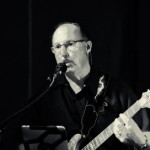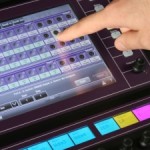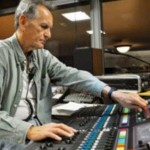Forums › Forums › GLD Forums › Archived GLD Discussions › Tuning a Room/Venue
- This topic has 13 replies, 4 voices, and was last updated 11 years, 1 month ago by
 Joe Hinkens.
Joe Hinkens.
-
AuthorPosts
-
2013/10/08 at 9:16 pm #24046
 Joe HinkensParticipant
Joe HinkensParticipantI could use some ‘Live Sound 101’ advice relative to using the tools (RTA, pink noise generator, etc) on the GLD 80 to EQ the different venues we play. The only prior experience I have in this area is the Smaart Wizards built in to the Presonus StudioLive software. Their method uses a simple setup that walks the user through the steps of setting up a reference mic, feeding some pink noise to the mains, and then displaying the response curve on a screen where a 4-band PEQ is used to flatten the curve. The first time I tried it, I was amazed at how much improvement I could achieve with just a few relatively minor tweaks.
That being said, I’d like to employ the same principles to my new GLD 80 but I’m lost as to what steps to take. Is there anyone out there who could list the basic necessary steps and recommended software to achieve this? I’ve checked out the Smaart web site and it looks like a heavy piece of software. I was hoping for a simpler approach if there is one.
If anyone can point me in the right direction, it would certainly be appreciated.
For the record, I’m running the GLD 80 to Fulcrum Accoustics FA28ac tops and have a pair of RCF 8004AS subs that should be delivered within the next few days. Prior to the RCF subs, we’ve been using QSC K subs. Everyone is on in-ears so no wedges.
Thanks,
JoeGLD-80 w/M-DANTE, GLD-AR2412, MacBook Pro, Studio One 2
2013/10/09 at 7:15 pm #35112 Chris93Participant
Chris93ParticipantSee here:
https://iliveforum.allen-heath.com/topic.asp?TOPIC_ID=2732
It’s worth running a sine sweep through the PA to see if anything’s going to resonate and cause buzzing, door handles seem to like 70Hz. [
 ]
]Chris
2013/10/09 at 7:55 pm #35114 GCumbeeParticipant
GCumbeeParticipantJoe:
Here is an option. Kind of like SMAART only much cheaper. 1 oct free, 1/3 is about $39, 1/6 $69, 1/24 $99. I use a Fastrack Pro interface with a dbx mic and a Win 7 laptop. Works great..
https://www.trueaudio.com/rta_abt1.htm
I have used a standalone 1/3 rack unit for years but it is just clunky to carry around and I lost ability to print from it..Can store and print on True RTA.
Another thing I have used lately. A couple of well known engineers in Nashville created a disc years ago. One of them is a close friend of mine so I got a copy of it. It has a full range pink noise for 1 min, then a 1K filtered noise for 1 min to calibrate an SPL meter to what you want. Say 80-90db or whatever. Then it goes in 1/3 octave filtered cuts down to 31hz, then starts at 1.25K and up to 16K. The filtered cuts are sharp Q’s with obvious slight side band but are centered on the selected freq. Just make a list of how each band compares to the reference 1K. After you have done that then use your EQ to adjust to correct based on that. You will be likely cutting a lot which is best anyway.
It works great. I have made otherwise crappy rooms and systems really shape up. I do use my ears for final adjustments. The disc has several very nice music cuts to listen to. I listened to them on nice control room speakers and headphones to orient myself with how they really sound to compare. Then I use a mic usually the type that will be used for primary use to see how it sounds. Vocal mic, podium mic etc. A combination is what is the final decision on it. Just never ever solely use pink noise as a lot of people wrongly do. Also auto eq’s don’t work that well either.George, MIDCOMM AV, Paducah, KY USA
GLD 80
AR24122013/10/09 at 10:35 pm #35116TJCornish
Participantquote:
Originally posted by GCumbeeJoe:
Here is an option. Kind of like SMAART only much cheaper. 1 oct free, 1/3 is about $39, 1/6 $69, 1/24 $99. I use a Fastrack Pro interface with a dbx mic and a Win 7 laptop. Works great..
https://www.trueaudio.com/rta_abt1.htm
I have used a standalone 1/3 rack unit for years but it is just clunky to carry around and I lost ability to print from it..Can store and print on True RTA.
That may be similar to the Presonus version of Smaart, but it’s missing the most important feature of real Smaart – phase response, which is required for system alignment. This software is only marginally more useful than the RTA built-in to the GLD.
The new Smaart DI is significantly less expensive than the full-blown Smaart, and is a better place to start.
2013/10/09 at 10:37 pm #35117TJCornish
Participantquote:
Originally posted by Joe HinkensI could use some ‘Live Sound 101’ advice relative to using the tools (RTA, pink noise generator, etc) on the GLD 80 to EQ the different venues we play. The only prior experience I have in this area is the Smaart Wizards built in to the Presonus StudioLive software. Their method uses a simple setup that walks the user through the steps of setting up a reference mic, feeding some pink noise to the mains, and then displaying the response curve on a screen where a 4-band PEQ is used to flatten the curve. The first time I tried it, I was amazed at how much improvement I could achieve with just a few relatively minor tweaks.
That being said, I’d like to employ the same principles to my new GLD 80 but I’m lost as to what steps to take. Is there anyone out there who could list the basic necessary steps and recommended software to achieve this? I’ve checked out the Smaart web site and it looks like a heavy piece of software. I was hoping for a simpler approach if there is one.
If anyone can point me in the right direction, it would certainly be appreciated.
For the record, I’m running the GLD 80 to Fulcrum Accoustics FA28ac tops and have a pair of RCF 8004AS subs that should be delivered within the next few days. Prior to the RCF subs, we’ve been using QSC K subs. Everyone is on in-ears so no wedges.
Thanks,
JoeGLD-80 w/M-DANTE, GLD-AR2412, MacBook Pro, Studio One 2
“EQ wizards” are widely regarged as useless, particularly below 100Hz, and especially if you are only measuring in one location in the room.
I would suggest playing pink noise from your GLD, then using an inexpensive measurement mic like the one Rational Acoustics sells with the GLD RTA. Use the graphic EQ to get things sort of flat, then move the mic and repeat. You’ll start to see how the room affects the sound in different locations and make a more educated compromise.
2013/10/09 at 10:57 pm #35118 Joe HinkensParticipant
Joe HinkensParticipantquote:
Originally posted by Chris93See here:
https://iliveforum.allen-heath.com/topic.asp?TOPIC_ID=2732
It’s worth running a sine sweep through the PA to see if anything’s going to resonate and cause buzzing, door handles seem to like 70Hz. [
 ]
]Chris
Thanks for the link Chris. That’s a very informative article on Pro Sound Web. I feared that this room eq process was more complex than what I had hoped. I’m thinking that I may have to bite the bullet and dive in with SMAART. Lots to learn……
Thanks,
Joe2013/10/09 at 11:03 pm #35119 Joe HinkensParticipant
Joe HinkensParticipantquote:
Originally posted by GCumbeeJoe:
Here is an option. Kind of like SMAART only much cheaper. 1 oct free, 1/3 is about $39, 1/6 $69, 1/24 $99. I use a Fastrack Pro interface with a dbx mic and a Win 7 laptop. Works great..
https://www.trueaudio.com/rta_abt1.htm
I have used a standalone 1/3 rack unit for years but it is just clunky to carry around and I lost ability to print from it..Can store and print on True RTA.
Another thing I have used lately. A couple of well known engineers in Nashville created a disc years ago. One of them is a close friend of mine so I got a copy of it. It has a full range pink noise for 1 min, then a 1K filtered noise for 1 min to calibrate an SPL meter to what you want. Say 80-90db or whatever. Then it goes in 1/3 octave filtered cuts down to 31hz, then starts at 1.25K and up to 16K. The filtered cuts are sharp Q’s with obvious slight side band but are centered on the selected freq. Just make a list of how each band compares to the reference 1K. After you have done that then use your EQ to adjust to correct based on that. You will be likely cutting a lot which is best anyway.
It works great. I have made otherwise crappy rooms and systems really shape up. I do use my ears for final adjustments. The disc has several very nice music cuts to listen to. I listened to them on nice control room speakers and headphones to orient myself with how they really sound to compare. Then I use a mic usually the type that will be used for primary use to see how it sounds. Vocal mic, podium mic etc. A combination is what is the final decision on it. Just never ever solely use pink noise as a lot of people wrongly do. Also auto eq’s don’t work that well either.George, MIDCOMM AV, Paducah, KY USA
GLD 80
AR2412Thanks George,
That CD sounds like a pretty useful item to have in your tool box. Are they available somewhere?The software you mentioned is PC only, so that leaves me out. I jumped on the Mac bandwagon a few years ago and never looked back.
Thanks,
JoeGLD-80 w/M-DANTE, GLD-AR2412, GLD AR84, MacBook Pro, Studio One 2
2013/10/09 at 11:06 pm #35120 Joe HinkensParticipant
Joe HinkensParticipantquote:
Originally posted by TJCornishquote:
Originally posted by GCumbeeJoe:
Here is an option. Kind of like SMAART only much cheaper. 1 oct free, 1/3 is about $39, 1/6 $69, 1/24 $99. I use a Fastrack Pro interface with a dbx mic and a Win 7 laptop. Works great..
https://www.trueaudio.com/rta_abt1.htm
I have used a standalone 1/3 rack unit for years but it is just clunky to carry around and I lost ability to print from it..Can store and print on True RTA.
That may be similar to the Presonus version of Smaart, but it’s missing the most important feature of real Smaart – phase response, which is required for system alignment. This software is only marginally more useful than the RTA built-in to the GLD.
The new Smaart DI is significantly less expensive than the full-blown Smaart, and is a better place to start.
Thanks TJ,
I recently read up on the new SMAART DI. It still appears to be a heavy piece of software, but I guess it would be easier to tackle than the standard version. I think I may have to dive down the rabbit hole….again.Thanks,
JoeGLD-80 w/M-DANTE, GLD-AR2412, GLD AR84, MacBook Pro, Studio One 2
2013/10/09 at 11:34 pm #35121 GCumbeeParticipant
GCumbeeParticipantJoe: As for True RTA. I understand what you are saying but it is a get what you pay for solution. I would pay for the real thing if I felt it would make THAT much of a difference. Most guys I see and myself don’t go to overboard on delays anyway FWIW.
As for the disc, it is not commercially available to my knowledge. They just produced it for their own use. I was offered a copy since I am also a commercial studio owner in Nashville. I have my facility leased out now. One of the 2 helped me do some voicing a few years ago. I got much better results than just broadband noise. I just did an auditorium that I did an installed last week. I thought it was OK with some minor tweaking but then after I went through the process with the disc and reset it I was amazed as was everyone else how much better it sounded. Clearer, cleaner, better fidelity.
GLD 80
AR24122013/10/09 at 11:46 pm #35122 Chris93Participant2013/10/10 at 12:26 am #35123
Chris93Participant2013/10/10 at 12:26 am #35123 GCumbeeParticipant
GCumbeeParticipantHave to be careful with tones. Standing waves will give false readings mainly at LF. That was the design premise of the famous UREI Sonopulse system popular back in the 70’s and 80’s. Pulsed tones with built in meter, microphone…
GLD 80
AR24122013/10/11 at 5:35 am #35131 Joe HinkensParticipant
Joe HinkensParticipantquote:
Originally posted by GCumbeeJoe: As for True RTA. I understand what you are saying but it is a get what you pay for solution. I would pay for the real thing if I felt it would make THAT much of a difference. Most guys I see and myself don’t go to overboard on delays anyway FWIW.
As for the disc, it is not commercially available to my knowledge. They just produced it for their own use. I was offered a copy since I am also a commercial studio owner in Nashville. I have my facility leased out now. One of the 2 helped me do some voicing a few years ago. I got much better results than just broadband noise. I just did an auditorium that I did an installed last week. I thought it was OK with some minor tweaking but then after I went through the process with the disc and reset it I was amazed as was everyone else how much better it sounded. Clearer, cleaner, better fidelity.
GLD 80
AR2412Thanks George,
That’s really interesting and you’ve got my curiosity peaked. I see Chris just put up a link to the CD which I’m downloading now. My connection speed is really bad this evening so it’s going to take a while to download. I glanced at the ‘How to’ doc attached to the CD. Lots to study there. I’m eager to dive in. Thanks very much for putting that up Chris.
I know I’ll have a ton of questions. Thanks for all your help.Thanks,
JoeGLD-80 w/M-DANTE, GLD-AR2412, GLD AR84, MacBook Pro, Studio One 2
2013/10/11 at 3:00 pm #35133 GCumbeeParticipant
GCumbeeParticipantJoe:
This is NOT the CD I referred to although it should prove useful. The disc I have is 1/3oct filtered noise not tones. As I said, you have to be careful with tones. They will react completely different in a room depending on the acoustics especially at low freqs..
Good luck,
GLD 80
AR24122013/10/12 at 7:42 am #35141 Joe HinkensParticipant
Joe HinkensParticipantquote:
Originally posted by GCumbeeJoe:
This is NOT the CD I referred to although it should prove useful. The disc I have is 1/3oct filtered noise not tones. As I said, you have to be careful with tones. They will react completely different in a room depending on the acoustics especially at low freqs..
Good luck,
GLD 80
AR2412OK. Thanks for the heads up George.
Thanks,
JoeGLD-80 w/M-DANTE, GLD-AR2412, GLD AR84, MacBook Pro, Studio One 2
-
AuthorPosts
- The forum ‘Archived GLD Discussions’ is closed to new topics and replies.